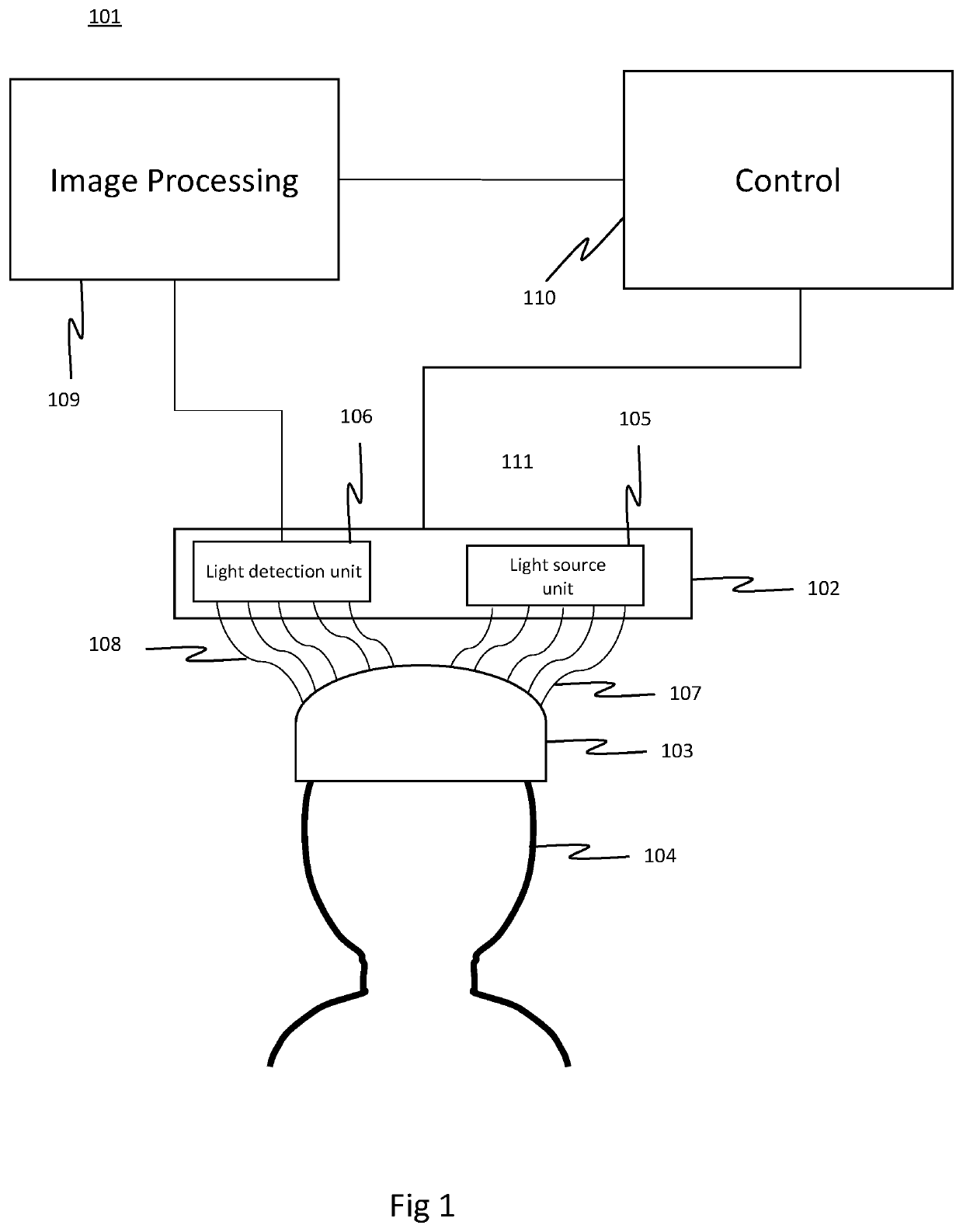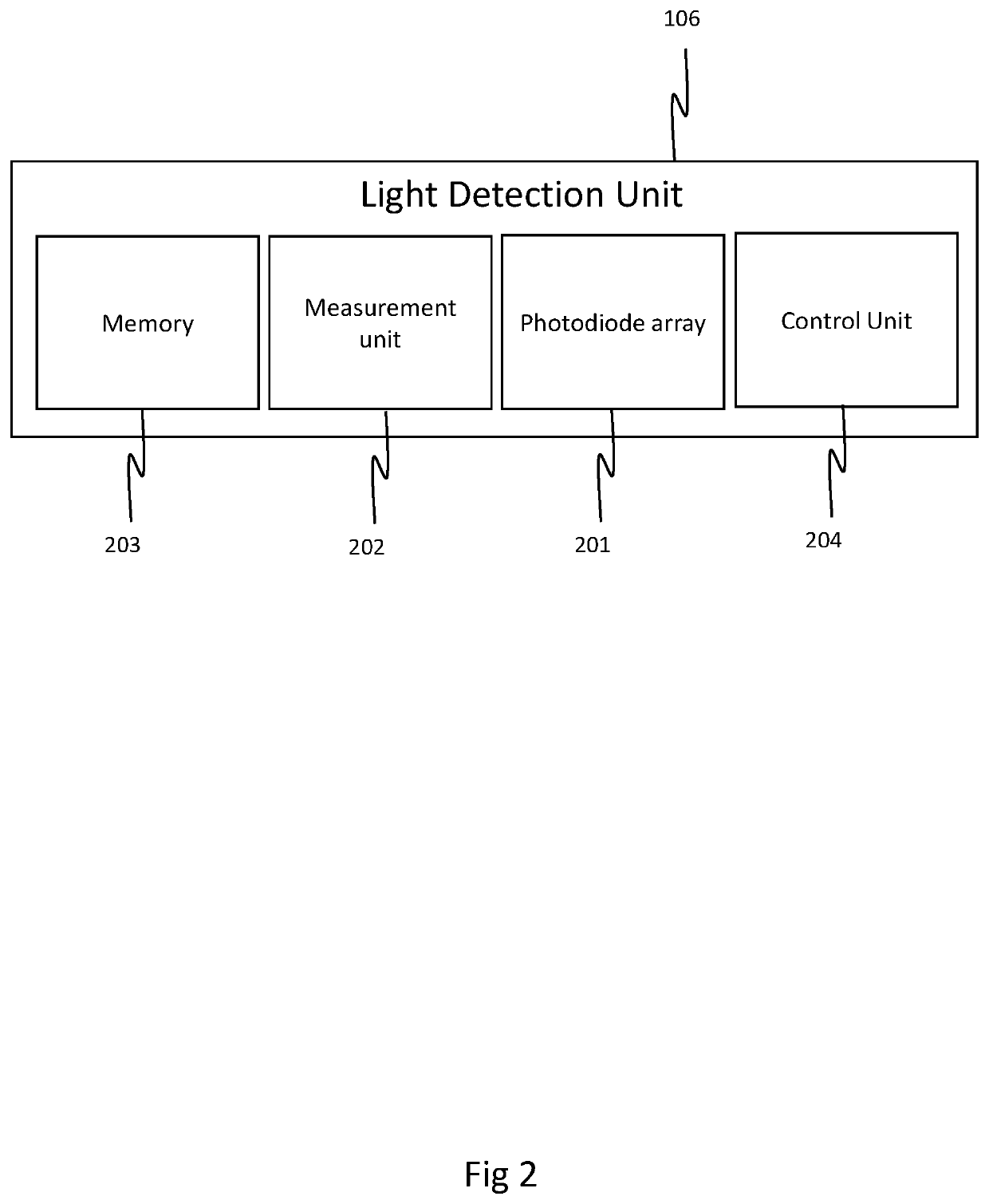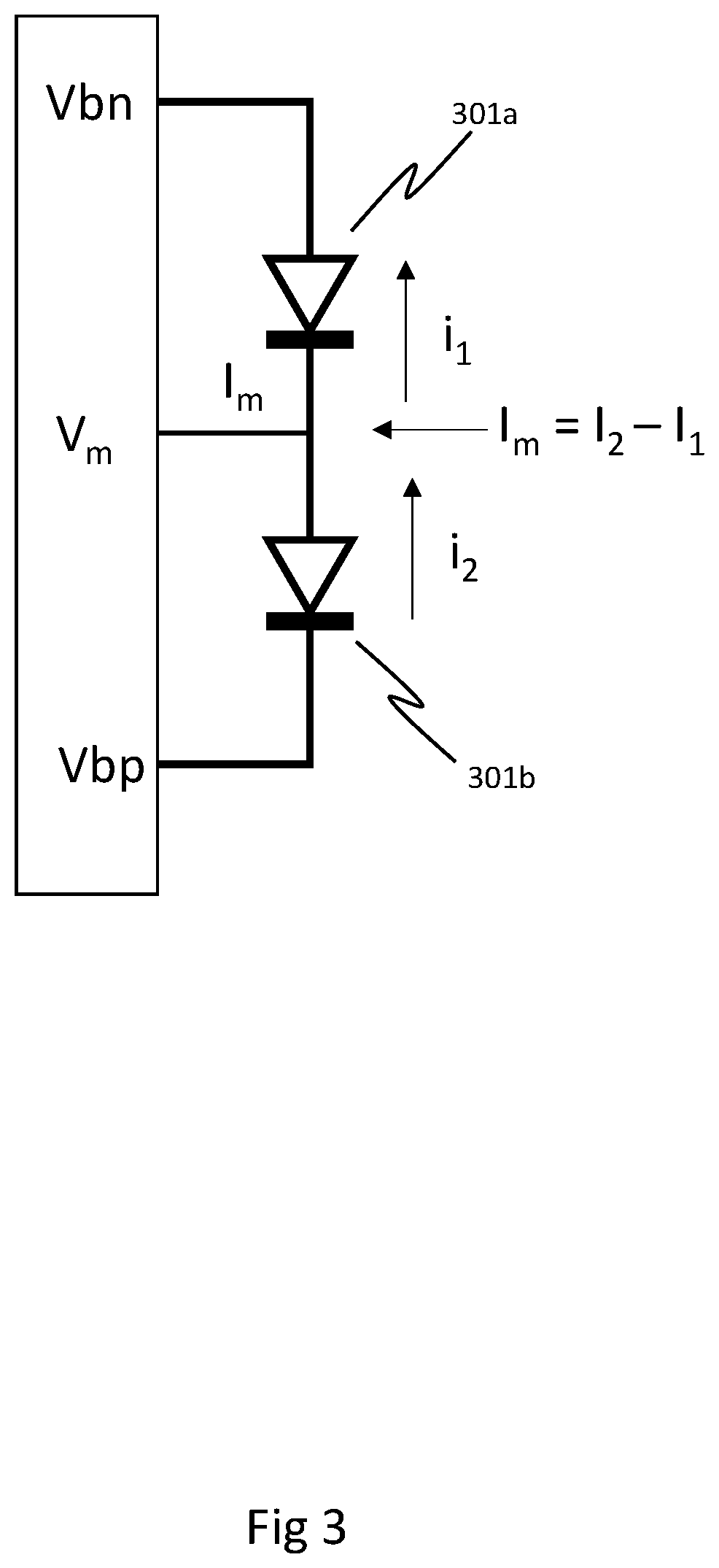Method and apparatus for measuring light intensity for imaging
a technology of light intensity and imaging, applied in the field of light intensity measurement, can solve the problems of restricted use of near-infrared spectroscopy, and achieve the effects of improving the overall resolution of the system, improving resolution, and accurately detecting
- Summary
- Abstract
- Description
- Claims
- Application Information
AI Technical Summary
Benefits of technology
Problems solved by technology
Method used
Image
Examples
Embodiment Construction
[0073]FIG. 1 provides a simplified schematic diagram of a near-infrared spectroscopy apparatus 101 for performing imaging operations on a subject.
[0074]The apparatus 101 comprises a headset connected to a measurement module 102. The measurement module 102 comprises a light source unit 105, a light detection unit 106. In use, the head set 103 is fitted over the head 104 of a subject.
[0075]The light source unit 105 comprises an array of light emitters, typically an array of light emitting photodiodes (LEDs). The LEDs may be of the same type or may be of different type, for example, two or three different types, producing different wavelengths of light.
[0076]It will be understood that “light” in the context of embodiments of the invention, refers generally to electromagnetic radiation within the frequency range typically used in near-infrared spectroscopy applications.
[0077]The measurement module 102 further comprises a first set of light conduits 107 referred to as “optodes”. At a fir...
PUM
 Login to View More
Login to View More Abstract
Description
Claims
Application Information
 Login to View More
Login to View More - R&D
- Intellectual Property
- Life Sciences
- Materials
- Tech Scout
- Unparalleled Data Quality
- Higher Quality Content
- 60% Fewer Hallucinations
Browse by: Latest US Patents, China's latest patents, Technical Efficacy Thesaurus, Application Domain, Technology Topic, Popular Technical Reports.
© 2025 PatSnap. All rights reserved.Legal|Privacy policy|Modern Slavery Act Transparency Statement|Sitemap|About US| Contact US: help@patsnap.com



